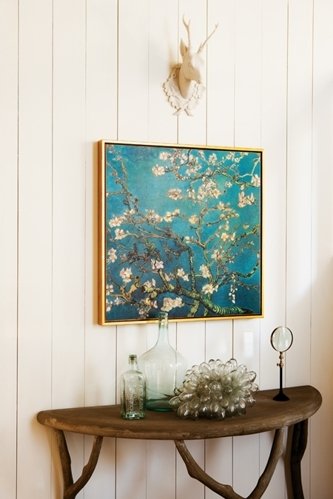Artwork Adds Form To Home Design As Radiant Heat Lends Function
published on september 12, 2013


It may be tempting for homeowners to match their choices in artwork to the color of the sofa or draperies. But they'll probably be happier with their selections if they consider the impact that art has and the atmosphere it creates in their homes.
Some designers believe the only rule that homeowners should follow when they're making a decision about artwork is to choose what they love. Including artwork in a design plan can create a focal point for a room, express a sense of place or are unique enough to be a conversation starter when guests visit.
"People get intimidated on the subject of art," according to Philadelphia interior designer Donna Hoffman. "Frankly, there are no hard fast rules when it comes to purchasing art, except this one: Buy what you love and, if possible, buy it when you see it."
Mix Aesthetics and Function
Before they make a major investment, home decorators should first review the art pieces they already own. Moving them around to different places in the house can bring a fresh look to a room design. Once that step is completed, homeowners can decide whether to purchase additional pieces.
People shouldn't be afraid to venture beyond a traditional definition of what is considered artistic. Beyond prints or oil paintings, architectural pieces - including utilitarian items such as grillwork or pieces made from recycled materials - can make an artistic statement.
At the High Point Furniture Mart earlier this year, the semi-annual exposition featured reclaimed metals in hardware and other embellishments on furniture. Using reclaimed materials may also be a nod to the growing interest in sustainability.
Beneath beautiful woods and tiling used in flooring, for instance, floor warming systems with energy-efficient radiant heat do away with the need for air ducts. Installing electric in floor heat allows homeowners to arrange their furnishings, including artwork, without having to work around the impediment of ducts.
Display with Originality
Presentation is a key feature in displaying artwork, and homeowners should look for ways to diversify how they present their art. For instance, vintage handkerchiefs handed down through a family may be more effectively displayed in a shadow box than in a traditional frame.
New York City interior designer Eric Cohler likes to bring focus to artwork by using bright, colored frames around a white mat, or a white frame around a colored mat. By hanging them in an under used part of a room or a dark corner, they'll draw attention to that spot.
Inspired magazine also recommended that homeowners consider white space as part of the presentation when arranging artwork in their homes. While the space around art isn't part of the piece, it helps to define and enhance the prominence of the artwork.
Florida-based designer Jim Howard advised home decorators to choose a space that isn't the expected location for a piece of artwork. He suggested putting pieces in unusual places, such as above a door, or to lean some against a mirror. When hanging several in an asymmetrical collage, he said they should be at least 3 inches apart.
Finally, homeowners' special interests should be reflected in the art they choose to showcase in their homes. The personal value of an art piece may outweigh its economic value, and should be embraced for the meaning it brings to the homeowner.
"Must it be museum quality, collector quality or cost tens of thousands of dollars? Absolutely not," Hoffman said. "Beauty and aesthetic pleasure are so individual."
Have Questions About Your Project?
Our team of Radiant Experts is ready to help!
Stay Updated
Get the latest radiant heating news and tips delivered to your inbox.



